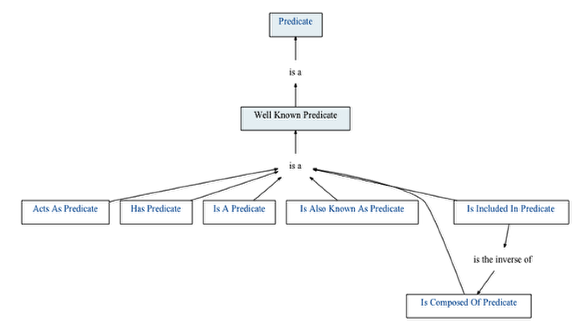Welcome to conceptmaps.io :)
You can browse all the published concept maps without signing in. If you'd like to create your own concept maps, all you have to do is sign in with Twitter. It's free!
Communicate clearly with well known predicates
conceptmaps.io has built-in support for certain predicates that tend to appear in many concept maps. These are called "well-known" predicates. This lesson will show you how to use them in your concept maps and understand them in concept maps built by others.
Add an attribute to a concept with the "has" predicate
A common pattern in concept maps is to define a set of attributes for a concept. conceptmaps.io supports this by letting you make propositions of the form "Line Item has Quanity", "Vendor has ABN", etc.
In the example above, we are adding an attribute to the Line Item concept.

The concept map updates to show the new attribute in the lower section of the box containing the concept. This is to save space on large concept maps and is typical of other notations such as UML.
Let's add a Unit Price attribute to our Line Item concept as well.

The concept now has two attributes as shown here.
Note: if you make a proposition about an attribute (for example, "Unit Price is measured in Australian Dollars", the attribute will no longer be presented inside the lower section of the concept it belongs to, but will become a separate node to allow relationships to be represented. Try it out if you like to see what happens.
Group Concepts together with the "is a" predicate

It is common in concept maps for concepts to share characteristics and for us to want to give that shared concept a name. conceptmaps.io lets you make propositions of the form "Customer is a Party" and "Vendor is a Party" to deal with this situation.
Let's extend our Order Processing domain with the proposition "Customer is a Party"

The concept map updates as shown above.
Note: unlike most arrows in conceptmaps.io concept maps, the arrow in this case points upward. This is to support the principle that more general concepts should be placed towards the top of concept maps and more specific concepts towards the bottom.
Let's complete this example with the proposition "Vendor is a party".

The concept map updates as shown above.
Note: to aid readability, the two "is a" predicates have their arrows converging so that only a single arrow head connects to the "Party" concept.
Allow multiple names for the same Concept with the "is also known as" predicate
It is often the case that different people have different names for the same concept. conceptmaps.io allows for this by letting you make propositions of the form "Customer is also known as Buyer" and "Vendor is also known as Seller".
Let's extend our Order Processing Domain with the proposition "Customer is also known as Buyer" as shown above.

The concept map updates as shown here. The alternative concept name is shown in parentheses inside the box for the original concept. This is to save space on large concept maps and to aid readability.
Let's provide an alternative name for the Vendor by adding "Vendor is also known as Seller" to our domain.

The concept map updates as shown.
Note: if you make propositions about the alternative name (for example, "Seller is represented by Agent"), then the alias will no longer appear inside the box for the original concept; it will become a separate node on the diagram to make relationships clear.
If you want to know more
The best place to find out about all the well-known predicates is not here in this user guide, but in the "conceptmaps.io Concept Modelling" domain which is a published domain just like any other in conceptmaps.io. Feel free to check it out; look for the concept "Well Known Predicate" and go from there.


